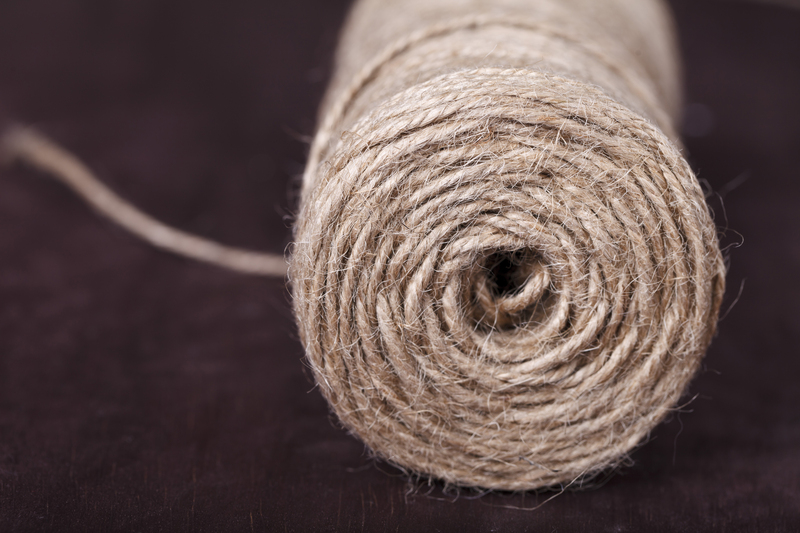Strategies for Summer Garden Health
Posted on 24/10/2024
Summer is a vibrant time for gardens, with blooming flowers, lush vegetables, and thriving greenery. However, the heat and long days can also stress plants and pose challenges for maintaining garden health. Whether you're a seasoned gardener or a novice, following some key strategies can ensure your garden remains a sanctuary of beauty and productivity throughout the hot months.
1. Understand Your Zone
Before diving into specific gardening techniques, it's crucial to understand the unique characteristics of your hardiness zone. The USDA Plant Hardiness Zone Map provides a great reference for determining which plants thrive in your area and when they should be planted. This understanding helps you select appropriate plants that can withstand summer heat in your region.

2. Mulching for Moisture Retention
One of the most effective strategies for summer garden health involves mulching. Mulch serves several vital functions, such as retaining soil moisture, suppressing weeds, and regulating soil temperature. Organic mulches like straw, compost, and bark decompose over time, adding nutrients to the soil.
Applying a thick layer (2-4 inches) of mulch around plants can significantly reduce the need for frequent watering. However, be cautious not to pile mulch directly against plant stems as it can cause rot.
3. Smart Watering Techniques
Efficient watering is critical during the summer. Overwatering and underwatering can both stress plants and invite diseases. Here are some tips for smart watering:
- Water Deeply and Infrequently: Instead of light, frequent watering, aim for deep watering sessions. This encourages roots to grow deeper and become more drought-resistant.
- Early Morning Watering: Water your garden in the early morning to minimize evaporation and allow plants to soak up moisture before the heat of the day.
- Drip Irrigation and Soaker Hoses:** These systems deliver water directly to the base of plants, reducing water waste and foliage diseases caused by wet leaves.
4. Soil Health and Fertilization
Healthy soil is the foundation of a robust garden. Regularly amend soil with organic matter such as compost to improve its structure, water-holding capacity, and nutrient content. Conduct a soil test to determine nutrient deficiencies and pH levels, and then apply the appropriate fertilizers.
Organic fertilizers release nutrients slowly and are less likely to burn plants than synthetic options. During summer, avoid heavy fertilization as high nitrogen levels can make plants more susceptible to heat stress.
5. Shade and Wind Protection
High temperatures and strong winds can take a toll on plants, leading to wilting and sunscald. Providing shade and wind protection can help mitigate these effects:
- Shade Cloths and Row Covers: Use these to shield plants from intense midday sun and reduce heat stress.
- Strategic Planting: Place taller plants or structures to cast shadows over more delicate species. Plant windbreaks or use temporary screens to protect against harsh winds.
6. Pest and Disease Management
Pests and diseases are more prevalent in warm weather, making vigilant monitoring essential. Here are some strategies for managing garden pests and diseases:
- Regular Inspections: Check plants regularly for signs of pests or disease. Early detection allows for prompt action, reducing the risk of infestations.
- Biological Controls: Encourage beneficial insects like ladybugs and lacewings that prey on harmful pests. Planting flowers such as marigolds and calendula can attract these helpful allies.
- Natural Remedies: Employ natural treatments such as neem oil or insecticidal soap to manage pests. Remove and dispose of infected plant material to prevent the spread of diseases.
7. Pruning and Deadheading
Pruning and deadheading are essential practices for maintaining plant health and aesthetics during the summer. Pruning removes dead or diseased branches, improving air circulation and reducing the risk of infections. Deadheading spent flowers encourages plants to direct their energy toward new growth and continuous blooming.
8. Companion Planting
Companion planting involves growing certain plants together to enhance growth, deter pests, and improve overall garden health. For example:
- Tomatoes and Basil: Basil repels tomato hornworms and enhances the flavor of tomatoes.
- Cucumbers and Nasturtiums: Nasturtiums deter aphids and attract pollinators.
- Carrots and Onions: Onions repel carrot flies, and carrots improve soil structure for onions.
9. Harvesting and Crop Rotation
Harvesting fruits, vegetables, and herbs promptly boosts plant health by preventing overripening and reducing the attraction for pests. Additionally, practice crop rotation by changing the planting locations of specific crops each season. This reduces soil-borne diseases and pest buildup while improving soil fertility.

10. Regular Maintenance and Observation
Finally, consistent maintenance and observation are crucial for a healthy summer garden. Regularly weed your garden to reduce competition for resources. Observe your plants daily to catch early signs of stress or infestation. This proactive approach allows you to address issues before they escalate.
Summary
Maintaining a healthy garden in the summer requires a blend of proactive strategies and adaptive techniques. By understanding your planting zone, mulching effectively, employing smart watering practices, and maintaining soil health, you can create a resilient garden. Providing shade, managing pests and diseases, and practicing companion planting further ensure your garden's well-being. Pruning, deadheading, and regular observation keep plants vigorous and productive. With these strategies, your summer garden can thrive, providing beauty, produce, and a sense of accomplishment throughout the hottest months.






 Certified and experienced landscapers
Certified and experienced landscapers



 Get a Quote
Get a Quote